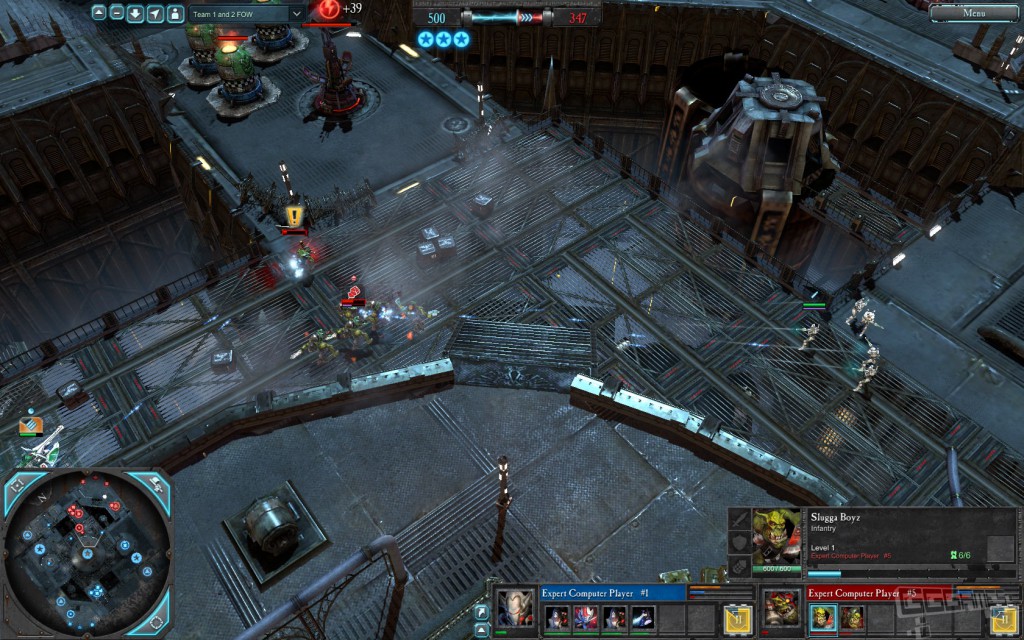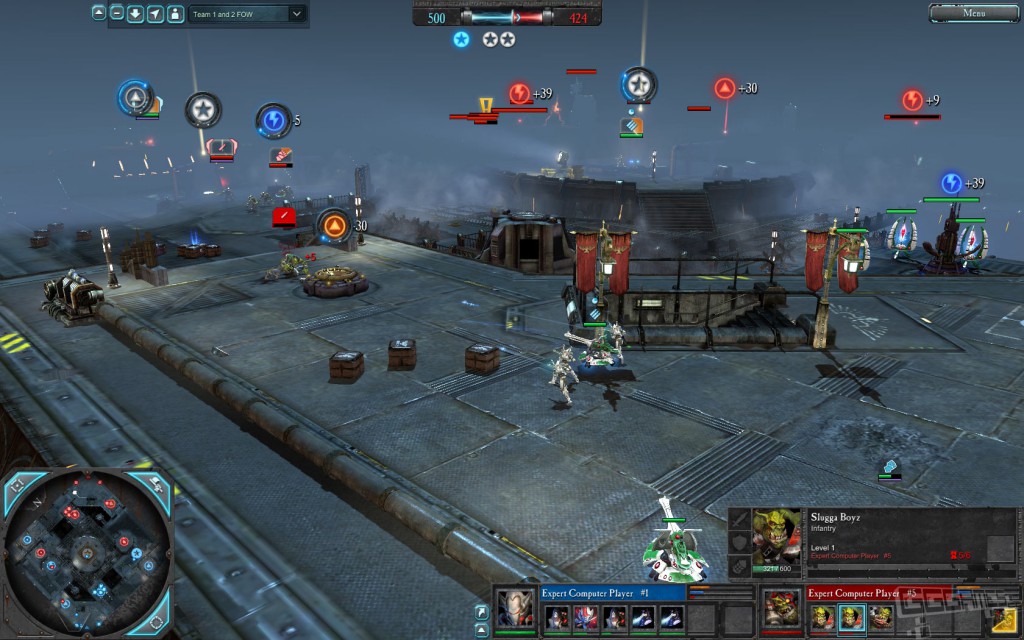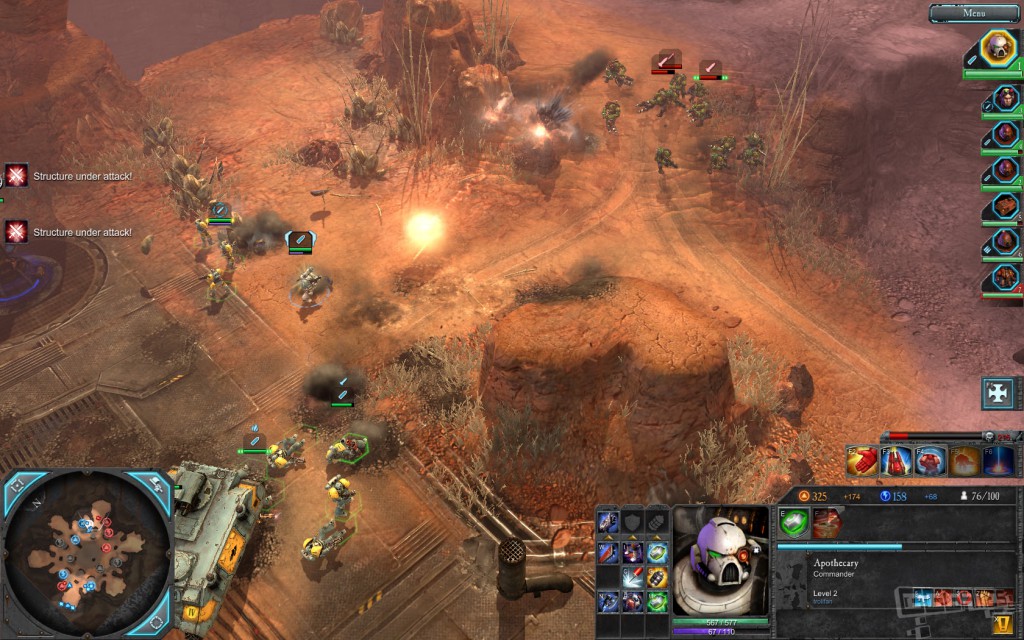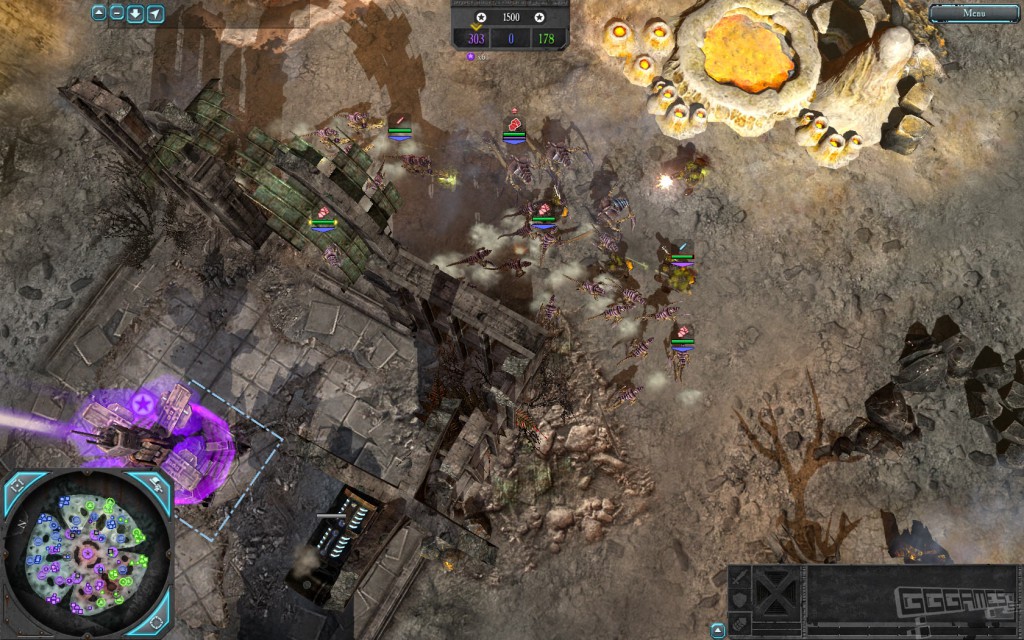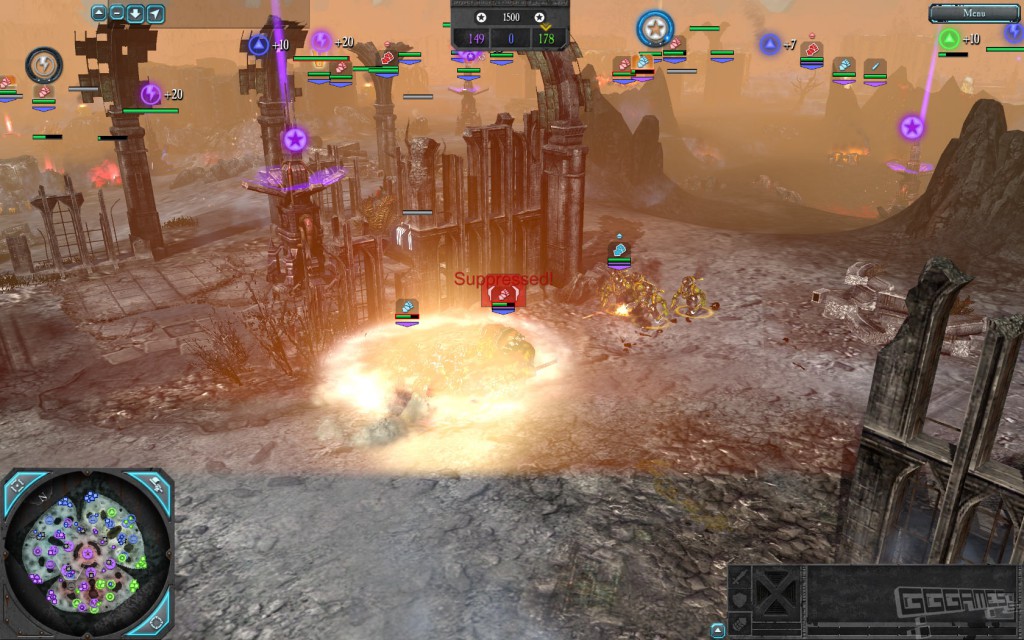Warhammer 40,000: Dawn of War II – Retribution – Complete Edition Review
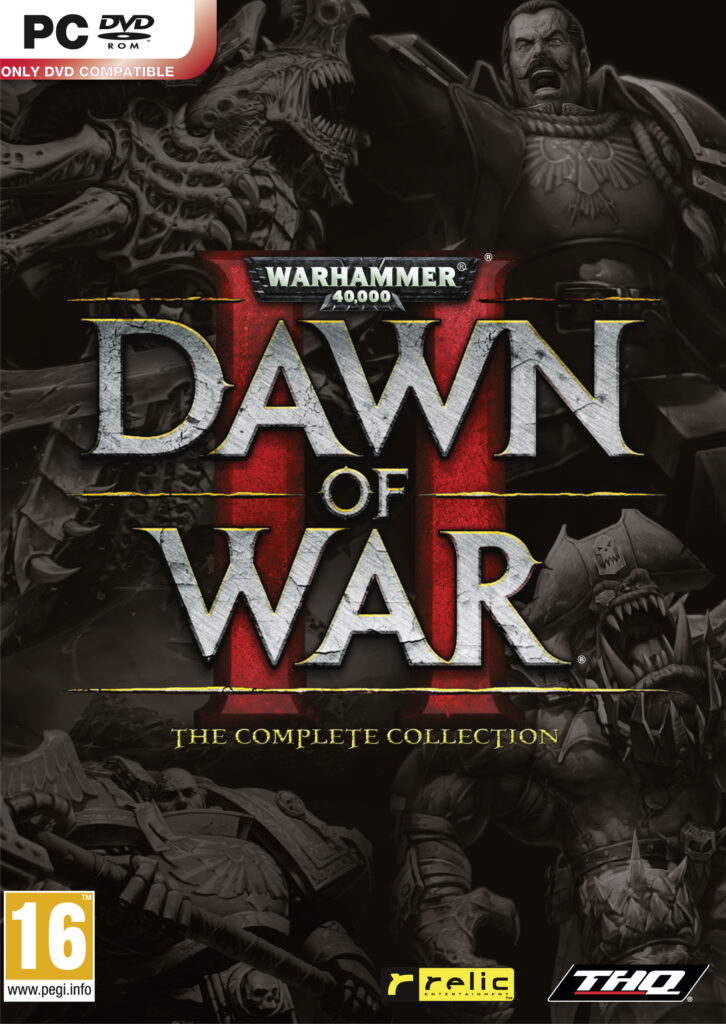
Brilliant, complex and entertaining real time strategy war game in the Warhammer 40,000 universe.
Story
Blood Angel Sergeant Tarkus and his brothers in arms arrive at planet Calderis in a mission to aid Captain Davian Thule countering an Ork advancement. Everything seems to be going according to standard procedure for the Blood Angels, but soon they find out that there’s more to the ongoing conflict than simple, random Ork aggression. There will be both Tyranid invasions, corruption amongst his own brothers and Chaos demons involved before this conflict is settled. With bravery and great pride the Blood Angels march head first into whatever ill-fate throws at them.
The Game
Warhammer 40,000: Dawn of War II – Retribution – Complete Edition is a bundle comprised of three Dawn of War II titles, namely the original Dawn of War II and the two stand alone expansions Chaos Rising and Retribution.
The Dawn of War games take place in the dark future sci-fi world of Warhammer 40,000 and they are real time strategy games in which you control squads, vehicles and the special abilities of your army to accomplish various mission objectives and eliminate enemy forces. Dawn of War II differentiates itself from other similar real time strategy games in that it totally eschews the base building game mechanic. Instead the focus is shifted towards capturing and protecting resource nodes on the map, hero characters’ special abilities and the various special attributes of your squads.
With that said, the gameplay comes down to managing squads on a chaotic battlefield; using special abilities like suppressive fire, magic spells and powerful melee attacks to your advantage while protecting strategic locations and capturing enemy resource nodes called Power Nodes and Requisition Points. The game can easily and quickly become very hectic and intense, and it’s mechanics give room for lots of deep strategies and variation.
With all the powerful attacks, weapons and spells that are in the game, you’ll see that much of the combat gameplay is about avoiding area blast attacks. If your squad gets caught in a blast, they’ll be blown away from the impact and thus displaced (or killed) on the battlefield, potentially putting you in a very disadvantageous position. This is yet another reason why it is important to constantly micromanage your squads in battle.
Learning the strengths and weaknesses of each squad can be a little overwhelming in the beginning, but it’ll come naturally before you know it. You’ll discover which of your squads are effective against what types of enemies, and at that point you’ll begin to be able to foresee your odds of survival against any given situation. That’s when the game starts to feel really rewarding and interesting just to look at, because you’ll start to discover new clever tactics that can turn the battle in your favor.
There have been numerous updates for fine-tuning the game balance since its release and for what it is, the game balance works great. It should be mentioned that according to the developers themselves, their main audience for these games wasn’t the most competitive and professional e-sports gamers. Allegedly their goal was to create an action packed and entertaining strategy war game for the everyday gamer, and that’s where it stands so far.
The level design is a fresh breeze of air in Dawn of War II and its expansions. They are cleverly laid out and aren’t stale and symmetric like you would normally see in games like this. Environmental obstacles are allowed to play a key role in most of the maps, which opens up for another level of strategy that you must take into consideration. There are 32 maps in total, and they’re all fun to play.
Content
In this massive bundle you’ll find three separate single-player Campaigns and three main multiplayer game modes; The Last Stand, Co-op Campaign and the standard versus games, which can be played both in ranked and unranked configurations (confusingly enough just called Games and Custom Games respectively). You can also play Skirmish games, which are versus matches but played with and against AI controlled armies. The versus multiplayer supports up to six players plus two observers, and includes four different game modes and this is obviously the main attraction of the entire package.
The single-player campaigns play entirely differently from the multiplayer matches, so the two are best regarded as separate experiences. We’ll go through all of it below.
The Campaign in Dawn of War II let’s you play as the Blood Angels and you’ll go through a series of events as the plot progresses between missions. From the start you aren’t given many choices, but as the campaign progresses you’ll unlock new missions, equipment called Wargear and squads as you go. The basic premise in this campaign is that you use your squad’s various strengths to overcome enemies and accomplish mission objectives. In between missions you see an overview map of all the available missions. You’ll see which missions are optional and which ones are required for the story to progress forward. You can only control four squads in any given mission, so you are encouraged to try different setups and tinker with your squads’ abilities and Wargear before going on your next mission.
Your squads will gain experience points through combat and this in turn will award skill points that can be used to unlock new abilities and improve stats. New Wargear can be gained through either mission rewards, bonus objectives or by picking up items dropped by defeated enemies.
Most of the time you are given hints on what type of enemies you are expected to battle in the coming mission so that you can pick squads and Wargear accordingly. For example, if you are about to battle an Ork convoy you had better bring the heavy weapons squad and equip it with a rocket launcher, or, if you are going to battle against Tyranids you may want to gear up some of your squads for close combat duty.
Squads are divided into various categories depending on what their main function on the field of battle is. An icon floating above each squad shows you what type it is, and this gives you a general idea of what it is good at – a melee squad will most certainly crush a ranged squad if they battle toe-to-toe and an artillery unit will smoke out squads that are hiding behind cover, for example.
When you lose a squad you can generally resurrect the leader of the squad and call in reinforcements from a captured beacon to fill in for lost troops – this way you can stay in the fight as long as at least one of your squads still stands.
Using cover such as low walls and buildings is a big part of the game, but the cover mechanic isn’t entirely obvious. It can be hard to position squads exactly as intended and some squads, such as Terminators and Dreadnaughts will unintentionally destroy most cover by merely touching it. Also, powerful area blast weapons destroys cover.
The Campaign in Dawn of War II takes about 15 hours to complete, and it can be played on four different difficulty levels, like the following Campaigns.
The Campaign mode in Chaos Rising is somewhat similar to the one in Dawn of War II. The new additions are – apart from the continuing story – new squads, Wargear and the fact that your squads can become corrupted by Chaos, which in turn grants them different powers. The way this corruption works is that it is objective based – various mission objectives redeem you from corruption while other actions plunge you deeper into it. Between missions you can see your current corruption level as indicated by a gauge. So, you can steer your army towards evil or struggle to stay away from it, all depending on how you want to play.
The Chaos Rising campaign takes about nine hours to complete, which is admittedly shorter than its predecessor, but still fairly long and worth playing if you want more of the same.
The Campaign in the Retribution expansion is an entirely different experience. Here you’ll get to choose which army faction you want to play as; Imperial Guard, Space Marines, Chaos Space Marines, Eldar, Orks or Tyranids. As in the previous campaigns you’ll get to equip various Wargear for your squads before starting a mission, and you’ll also have bigger freedom of choice when it comes to selecting squads for your army. The basic gist of it is this; you are again limited to four squads in your army, but this time any of the four squads can be replaced by a special hero unit. So basically you get to customize your army a little bit more, mixing and matching hero units and regular squads. Completing missions will allow you to unlock new squads and abilities for your army. Some of this customization feels redundant however, because it doesn’t always affect how the game plays nor what strategies you can use. Also, not all army factions have the same level of depth when it comes to the amount of Wargear and abilities they can have.
The Campaign consists of the same basic levels and story regardless of what army faction you choose to play as, which makes them a stand alone fare and not consistent between one another. Playing through the Campaign with one army faction will take about eight hours, and the replay value is fairly high if you want to explore multiple factions’ weapons, abilities, heroes and squads.
The story in the Campaigns have a fair deal of intrigue and epic stuff going on in them, along with some interesting plot twists and well written dialogue. As Warhammer 40,000 fiction it is true to the source material, so especially fans of the franchise should find the story amusing. Either way, the story is about as good as it needs to be in a real time strategy war game.
The Co-op Campaign mode lets you play any of the single-player Campaigns together with another player. It should be said that this game mode does not support playing with random people online, instead you are required to invite people from your friend list to join your game. Other than that, this is a nice addition to the game, but it loses much of its appeal if you’ve already played through the Campaign on your own.
The Last Stand game mode is a special co-op mode where you control a single hero unit (out of six possible) and battle against waves of enemies in an enclosed arena. The gameplay focus here is focused around micro-management of your hero skills, coordination and mastering the art of killing various enemy types as fast and effectively as possible. This game mode supports three players, and can be played with random people through the built in matchmaking system.
In The Last Stand your selected hero will collect experience points through participating in battle – the more enemy waves you survive, the more and faster you kill, the more points you’ll collect. These points will count towards your hero level which in turn unlocks new Wargear that you can equip, which by the way, are different from the ones you see in the Campaigns. So there’s an entirely different library of Wargear and abilities exclusive for The Last Stand mode for each of the playable heroes.
Since this game mode is so much dependent on team work, you can’t really hope to play with any long lasting success if you’re teamed with poor players.
Multiplayer
As mentioned above, the versus multiplayer modes in Warhammer 40,000: Dawn of War II – Retribution – Complete Edition are completely different experiences from the single-player and co-op modes described above. The game modes here are Head to Head, Two on Two, Annihilation, Free for All, Team Free for All and Victory Point Control – all of which are pretty self explanatory. The games support both LAN, Private and Public games over the built in matchmaking service. If you want the full experience you’ll obviously choose to play the Retribution expansion in multiplayer as it adds new units into the mix and the Imperial Guard as a playable faction. The playable armies are thus; Imperial Guard, Space Marines, Chaos Space Marines, Eldar, Orks and Tyranids.
Each army faction has three different hero units, and each hero has twelve possible pieces of Wargear that all give unique abilities or other benefits. You can only have one hero per game, and at any given time your hero can only equip three pieces of Wargear. Also your regular squads can be upgraded with their own associated Wargear, so there’s a lot to play around with. Furthermore, each army faction has more than ten different unit types that they can employ, and they all have their own abilities and specializations, which of course calls for some seriously strategic usage.
Playing the versus multiplayer revolves heavily around capturing and defending Power Nodes and Requisition Points, which means that you are forced to run around the map a lot, sort of like playing tag but with resource nodes. Since there is no base building involved, the game encourages that you quickly get your units out on the field and start the action – harassing, ambushing and facing off against enemy squads. Keeping your units alive is really important, and there is a function key for retreating a squad back to the base where it can recover. What this does, is that it sends your squad running in a special automated withdrawal where it can avoid ranged fire but are weak against melee combat. Using this effectively is another major part of the game. Furthermore your squads and hero can level up and become stronger through battle experience, which adds some extra flavor to the game.
The game keeps track of all sorts of multiplayer stats, both for The Last Stand and ranked matches. You’ll also see that your Army level increases whether you play ranked or unranked – this is merely an indicator that gives other players a rough indication about your experience with the game.
Ranked matches pits you against random opponents – and from the looks of it, it doesn’t take Army levels into consideration. Network latency can be seen before the game starts so you have a chance to back out if the ping between your opponent looks too high. It would have been nice to see a matchmaking system that actually tries to match players of equal skill level.
Graphics
The graphics are really nice as it sports detailed 3D models and environments that portray the distinct Warhammer 40,000 style with delightful accuracy and resourcefulness. The special effects like the magic effects, explosions and blood looks appropriate too, so the battles are quite spectacular and entertaining to watch. There’s also a great variation in the environments, and they all have their own unique look and feel. The visuals are quite gory as it shows body parts flying off in explosions and you’ll also see dead bodies and blood splatter soil the ground as the battle rages on.
The game is very colorful which may be a glaring contrast to the otherwise dark and gloomy feel of Warhammer 40,000, but it can be argued that it strikes a happy middle ground between the dark and dirty and something that is aesthetically appealing to look at – even in the long run.
Sound
The musical score is bombastic and sounds like a doomsday movie soundtrack. It sets the mood for the game quite nicely – it is intense and its drums boom loud like violent thunder. Needless to say, it mixes well with the sound effects of the game, creating a symphony of bloody screams, mind numbing spell effects and of course persistent gun fire echoing faithfully across the battlefield.
Sounds that occur far from your current location can be heard in the distance, and it sounds surprisingly believable. This really adds immersion to the game and gives life to the game world. The voice acting is mostly very good as well – most lines are spoken with tact and sound appropriate to the context. There are a few exceptions where the voices are a bit overacted, but it’s hardly worth complaining over.
Summary
Warhammer 40,000: Dawn of War II – Retribution – Complete Edition is a worthy bundle in epic proportions, and for real time strategy game fans it can’t really go wrong. The first Dawn of War games were nothing short of brilliant, and the sequel is at least equally brilliant. It introduces lots of new and interesting concepts to the genre and balances it out well. All in all, it’s an amazingly deep game that has lots of variation and manages to stay fresh for a long time.
Of course, this is a game best played with friends, or at least in multiplayer, because the single-player Campaigns alone don’t do the games justice. As a multiplayer game it offers plenty of diversity, game modes and endless hours of entertainment.
